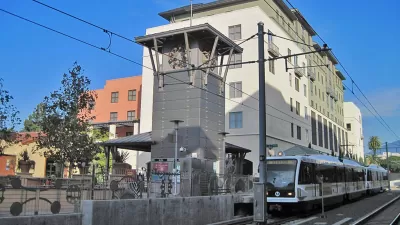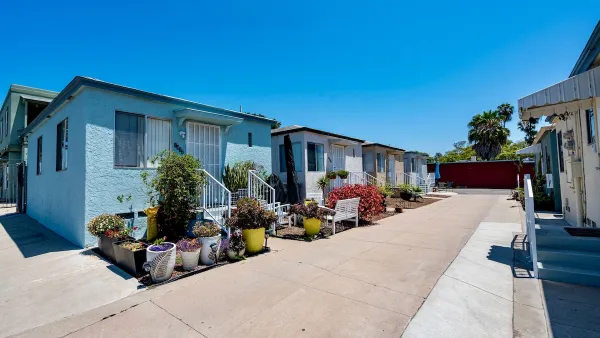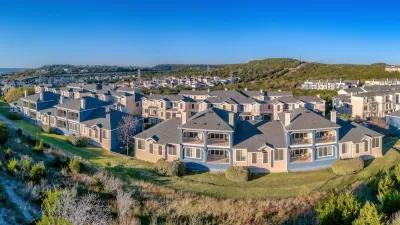A new study conducted by the Center for Neighborhood Technology shows that homes in close proximity to transit stations lost much less of their value during the collapse of the housing market, reports Tanya Snyder.

"If you live close to a transit station, chances are you’ve weathered the recession better than your friends who don’t," says Snyder. "Your transportation costs are probably lower, since you can take transit instead of driving. Transit-served areas are usually more walkable and bikeable too, multiplying your options. And while home values plummeted during a recession that was triggered by a massive housing bubble, your home probably held its value relatively well – if you live near transit."
"For the report, 'The New Real Estate Mantra: Location Near Public Transportation' [PDF], CNT looked at five metro regions — Boston, Chicago, Minneapolis-St. Paul, Phoenix, and San Francisco," and found:
Across the study regions, the transit shed outperformed the region as a whole by 41.6 percent. In all of the regions the drop in average residential sales prices within the transit shed was smaller than in the region as a whole or the non-transit area. Boston station areas outperformed the region the most (129 percent), followed by Minneapolis-St. Paul (48 percent), San Francisco and Phoenix (37 percent), and Chicago (30 percent).
FULL STORY: Study: Homes Near Transit Were Insulated From the Housing Crash

Maui's Vacation Rental Debate Turns Ugly
Verbal attacks, misinformation campaigns and fistfights plague a high-stakes debate to convert thousands of vacation rentals into long-term housing.

Planetizen Federal Action Tracker
A weekly monitor of how Trump’s orders and actions are impacting planners and planning in America.

In Urban Planning, AI Prompting Could be the New Design Thinking
Creativity has long been key to great urban design. What if we see AI as our new creative partner?

Cal Fire Chatbot Fails to Answer Basic Questions
An AI chatbot designed to provide information about wildfires can’t answer questions about evacuation orders, among other problems.

What Happens if Trump Kills Section 8?
The Trump admin aims to slash federal rental aid by nearly half and shift distribution to states. Experts warn this could spike homelessness and destabilize communities nationwide.

Sean Duffy Targets Rainbow Crosswalks in Road Safety Efforts
Despite evidence that colorful crosswalks actually improve intersection safety — and the lack of almost any crosswalks at all on the nation’s most dangerous arterial roads — U.S. Transportation Secretary Duffy is calling on states to remove them.
Urban Design for Planners 1: Software Tools
This six-course series explores essential urban design concepts using open source software and equips planners with the tools they need to participate fully in the urban design process.
Planning for Universal Design
Learn the tools for implementing Universal Design in planning regulations.
Appalachian Highlands Housing Partners
Gallatin County Department of Planning & Community Development
Heyer Gruel & Associates PA
Mpact (founded as Rail~Volution)
City of Camden Redevelopment Agency
City of Astoria
City of Portland
City of Laramie





























